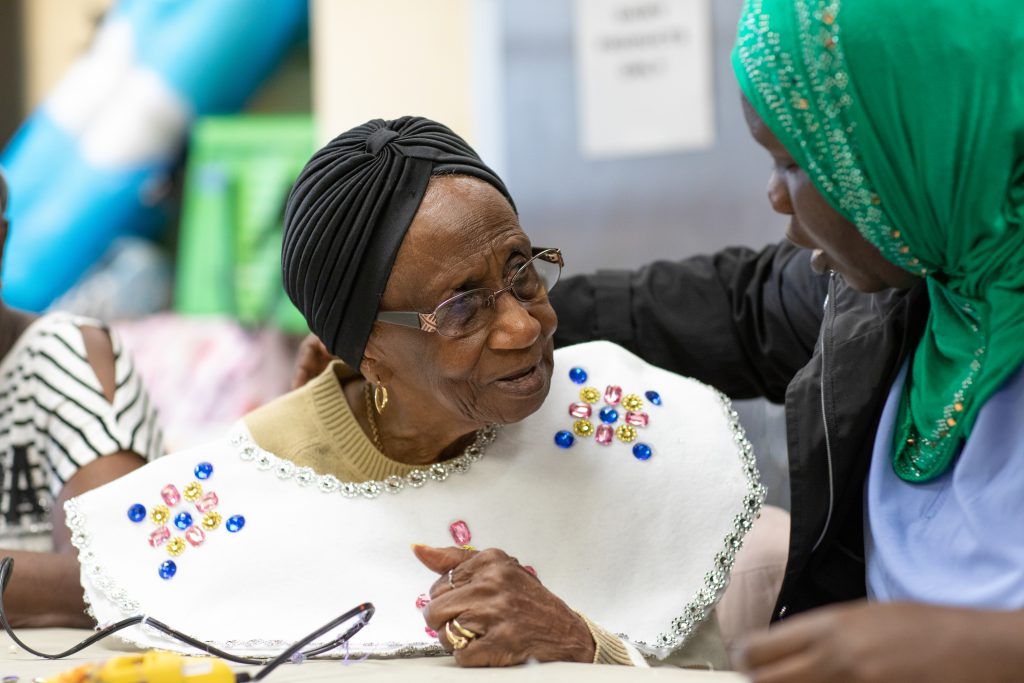The term “creative aging” defines growing fields of practice and research as well as a specific type of arts education programming designed to serve older adults.
Creative aging workshops are:
- Hands-on, skills-based, and sequential
- Designed to encourage social engagement
- Led by professional teaching artists
An exemplary creative aging program features:
- Collaborative planning between the host organization and teaching artist
- At least 8 sessions, scheduled for a minimum of 90 minutes each
- A culminating event open to the public, i.e., an exhibit, performance, or reading
- A registration process set up to encourage registrants to attend all sessions in the series
- A focus on skill-building and social connection

Why is Creative Aging important?
Researchers such as Gene Cohen, and others, have discovered that the aging brain is far more pliable than previously believed, and that structured learning — especially through the arts — can improve cognitive functioning and enhance the quality of life. The goals are instructional, the results are often therapeutic.